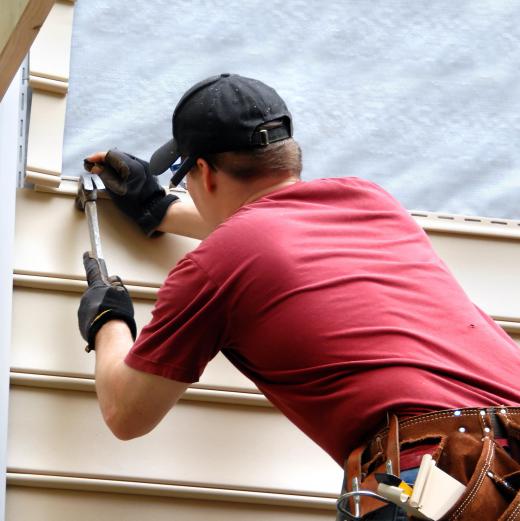Standing seam roofing is composed of metal panels that are held in place by small metal clips. The clips are fastened to the roof by means of a screw and snap over the edges of the metal roof panels. A thin metal cover is then placed over the joints where two panels meet at the clips. The thin covers prevent water, snow and ice from passing between the panels, thereby creating a watertight roof.
Many commercial-type buildings use standing seam roofing due to its durability and ease of installment. A properly installed standing seam roofing system will often outlast other types of roofing. An added benefit of the standing seam roofing to a commercial building is the ability to choose from many different colors in the design of the roof and showcase the company's prominent color in the building's makeup. In windy or harsh environments, the standing seam roofing also performs better than other types of roofing by withstanding wind and ice much better than a traditional rubber or shingled roofing system.

Many modern family homes feature the standing seam roofing to provide a retro appearance. The standing seam roofing resembles the type of roofing components found in 18th century home construction. Unlike asphalt shingles, the metal panels of the standing seam roofing system will not rot away or blow off during a storm. An occasional re-painting of the roof to cover any scratches or sun damage to the finish will keep the roof in proper working order for decades. While the early panels were made of tin, modern panels are made from much higher-grade materials, which offer a more durable finished product.
To apply the metal roofing over a plywood roof, it is important to apply a tar/felt-paper barrier between the metal and plywood. After rolling out the tar/felt paper and stapling it down, the next step is to place the first metal panel. The panels are secured by snapping the edge into a clip and screwing the clip onto the roof. Another panel is placed next to the first and snapped into place by locking it into the provision on the other side of the installed clip. A narrow piece of metal formed into a cover snaps over the the two standing seams and mounting clips of two metal panels, which prevents water from accessing the roof.
